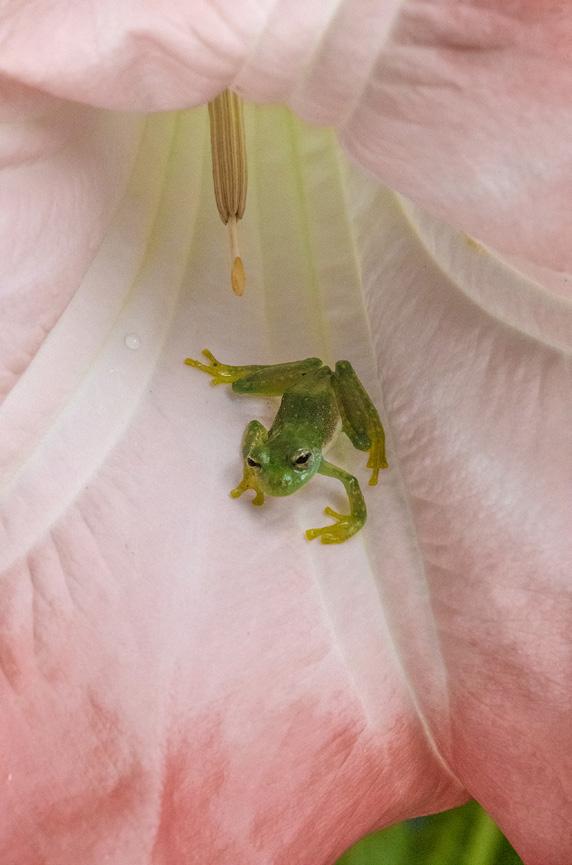
1 minute read
What’s wrong with this picture?
Look at this picture closely. These are collared aracari toucans from Costa Rica, and the one on the left is out of focus. It is a few inches closer to the camera position than the one on the right, and that made all the difference. I was shooting with a Canon 500mm f/4 telephoto, and given the relatively close proximity to the toucans (I was about 40 to 50 feet away) the depth of field with the long lens was insufficient to render both subjects in focus.
When there are two subjects in the frame, both have to be sharp. It doesn’t matter if the subjects are people, flowers, animals, pieces of fruit, architectural details, or whatever. In my opinion, if there are two elements in the picture that are prominent enough to be subjects, they both must be sharp.
In this situation, since the light level was low and I had to have a fast enough shutter speed to freeze the birds, I was forced to shoot with an f/4 lens aper-

ture. That meant it was impossible to render both toucans sharply.
There were four options to address this issue: 1) Wait for both birds to be equidistant to the camera. This might never happen, but it’s the ideal solution. If and when this occurred, both birds would have been in focus even with a large aperture. 2) Wait for one of the birds to fly away. 3) Use Photoshop to clone the out of focus bird out of the frame. 4) Take two separate pictures -- one of each bird in focus -- and then using Photoshop composite them together.
Some people still think Photoshop is cheating because it can create images that didn’t exist in reality. But digital manipulation can also be used to circumvent the limitations of optics by fixing problems (like an out of focus bird) and making the composite look like the image you saw with your eyes. §






